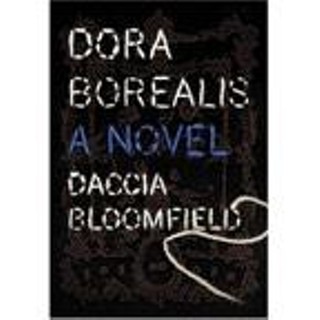Dora Borealis
Daccia Bloomfield
(ECW)
Dora Borealis isn't the first contemporary urban ghost story, but it's probably the weirdest. Unlike Stephanie Domet's ghost in Homing who's lost his way, Bloomfield's ghost Bella is quite nasty. Flip, an unemployed writer lacking in the hygiene and social skills department, first met Bella (she comes to him as the sound of bells, like a sociopathic Tinkerbell) when he was eight, and has let her control his life ever since. Each time he gets close to a woman, like his old friend, the sexually adventurous Lamb, or his new love interest, the lawyer-artist Dora, Bella gets violent. Backdropped against Toronto's arts community, the party and art-talk scenes feel the most authentic---likely because Bloomfield co-directed a gallery and is obviously in the scene---and she gets the hipster types down pat: misguided activists, knitters who believe their scarves are sculptures and the self-proclaimed writers, like Flip, who never pick up a pen. But when Flip addresses "you," an unnamed female character he meets at a party (presumably a representation of the reader), randomly throughout the book, an unnecessary, confused side-narrative develops. A case of taking on too much, Dora Borealis shows promise, but ultimately needs an exorcism.
Sue Carter Flinn
type: book
Dora Borealis
Daccia Bloomfield
[
{
"name": "Air - Inline Content - Upper",
"component": "26908817",
"insertPoint": "1/4",
"requiredCountToDisplay": "8"
},{
"name": "Air - Inline Content - Middle",
"component": "26908818",
"insertPoint": "1/2",
"requiredCountToDisplay": "8"
},{
"name": "Air - Inline Content - Lower",
"component": "26908819",
"insertPoint": "100",
"requiredCountToDisplay": "1"
}
]














